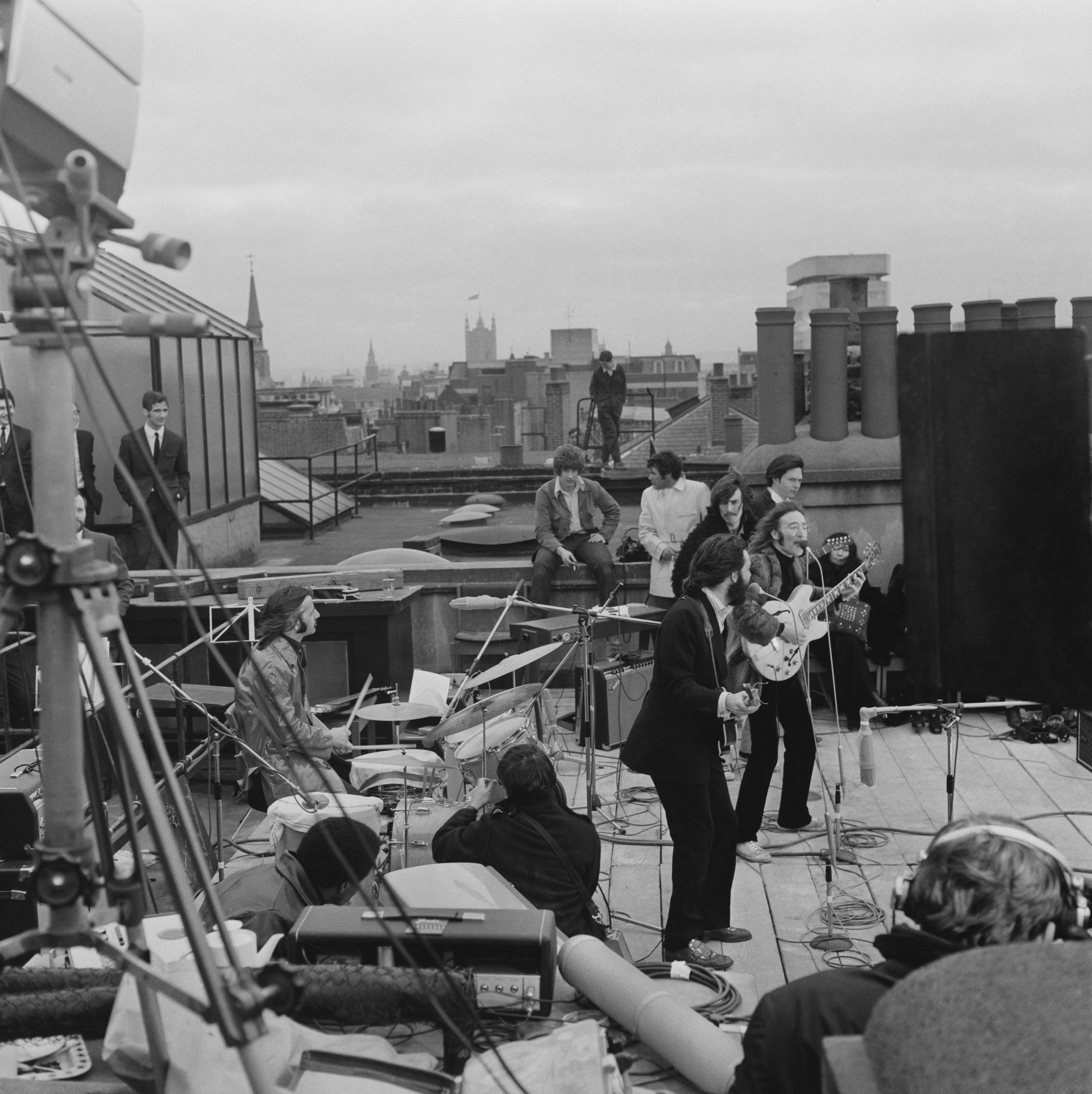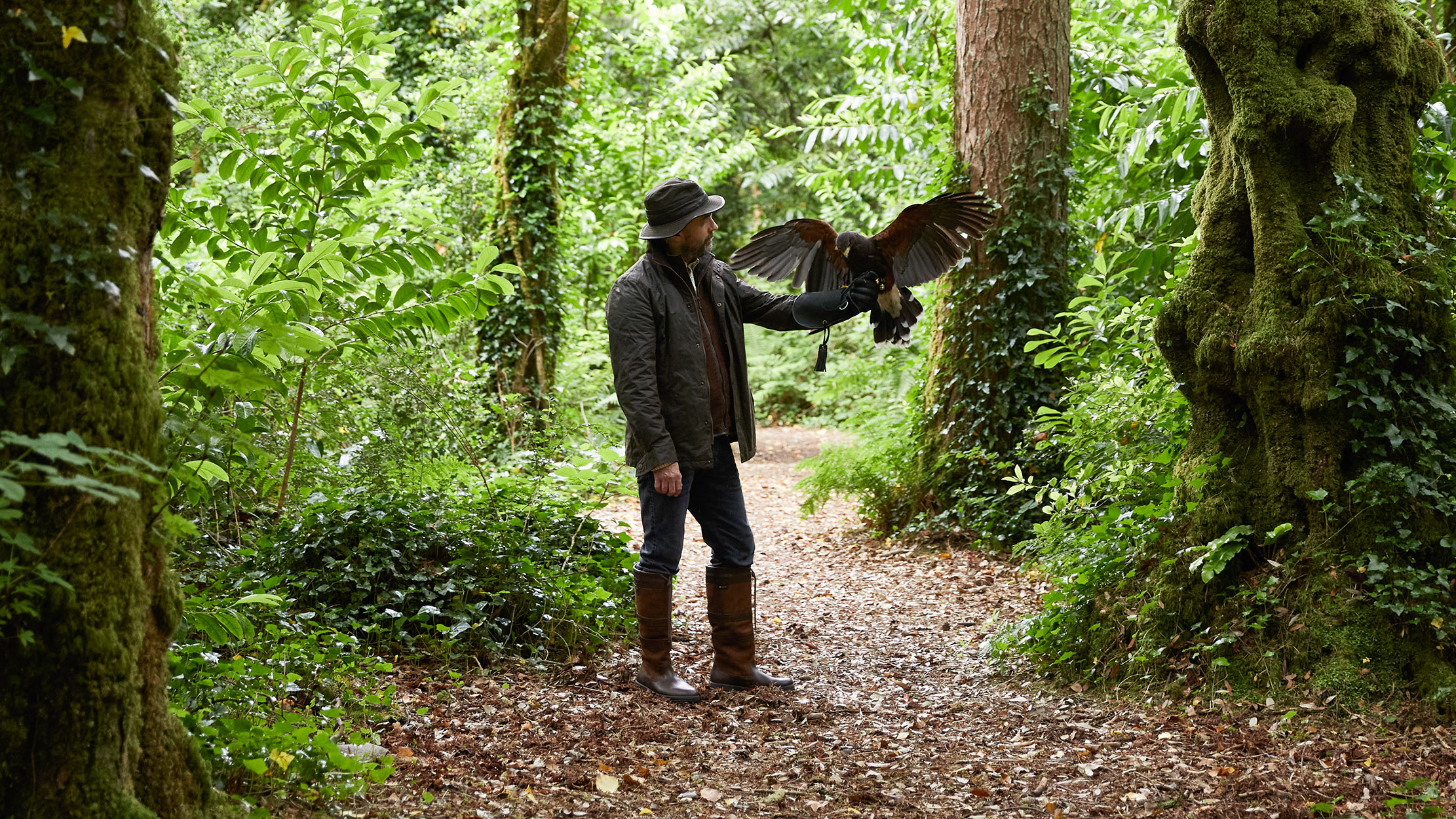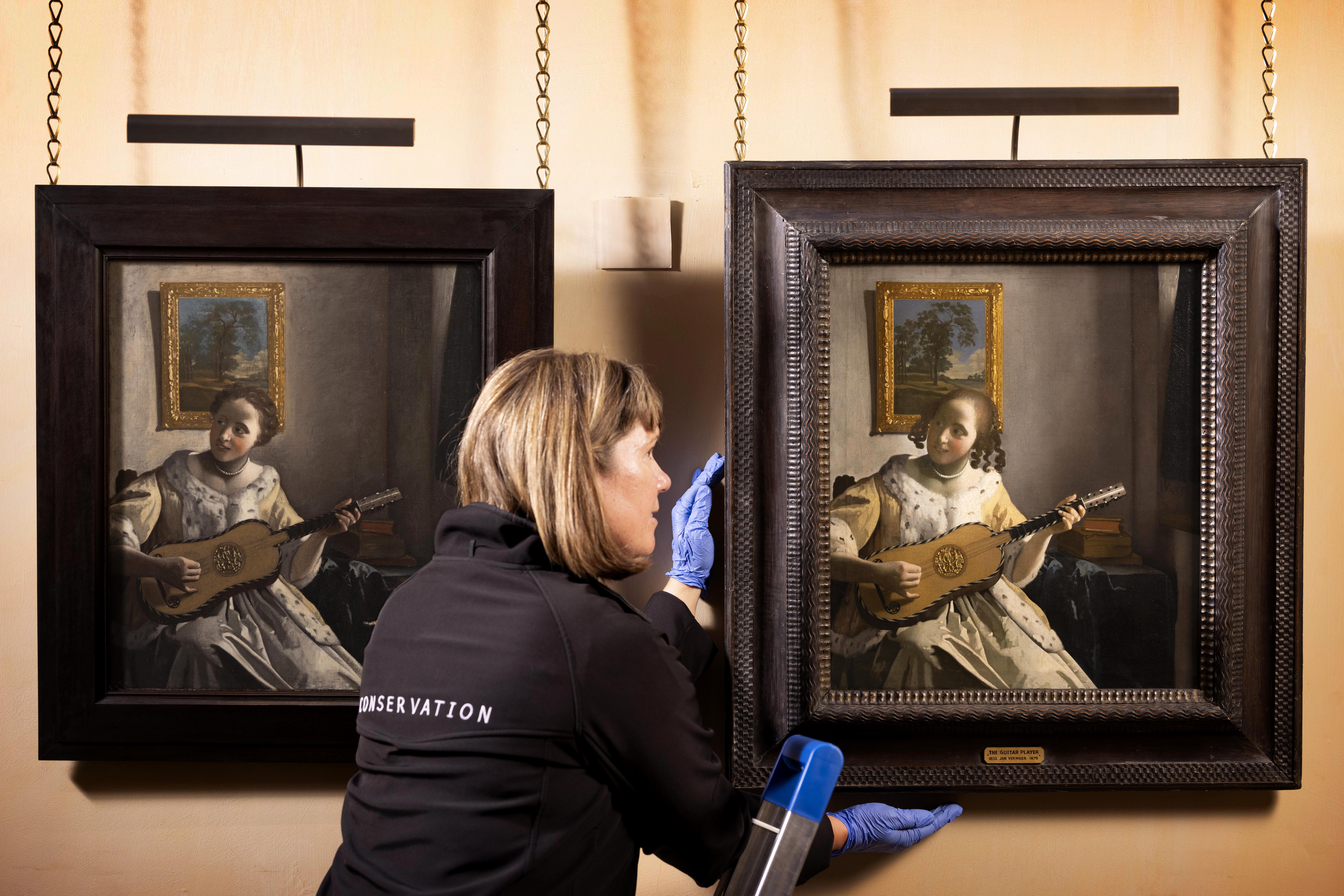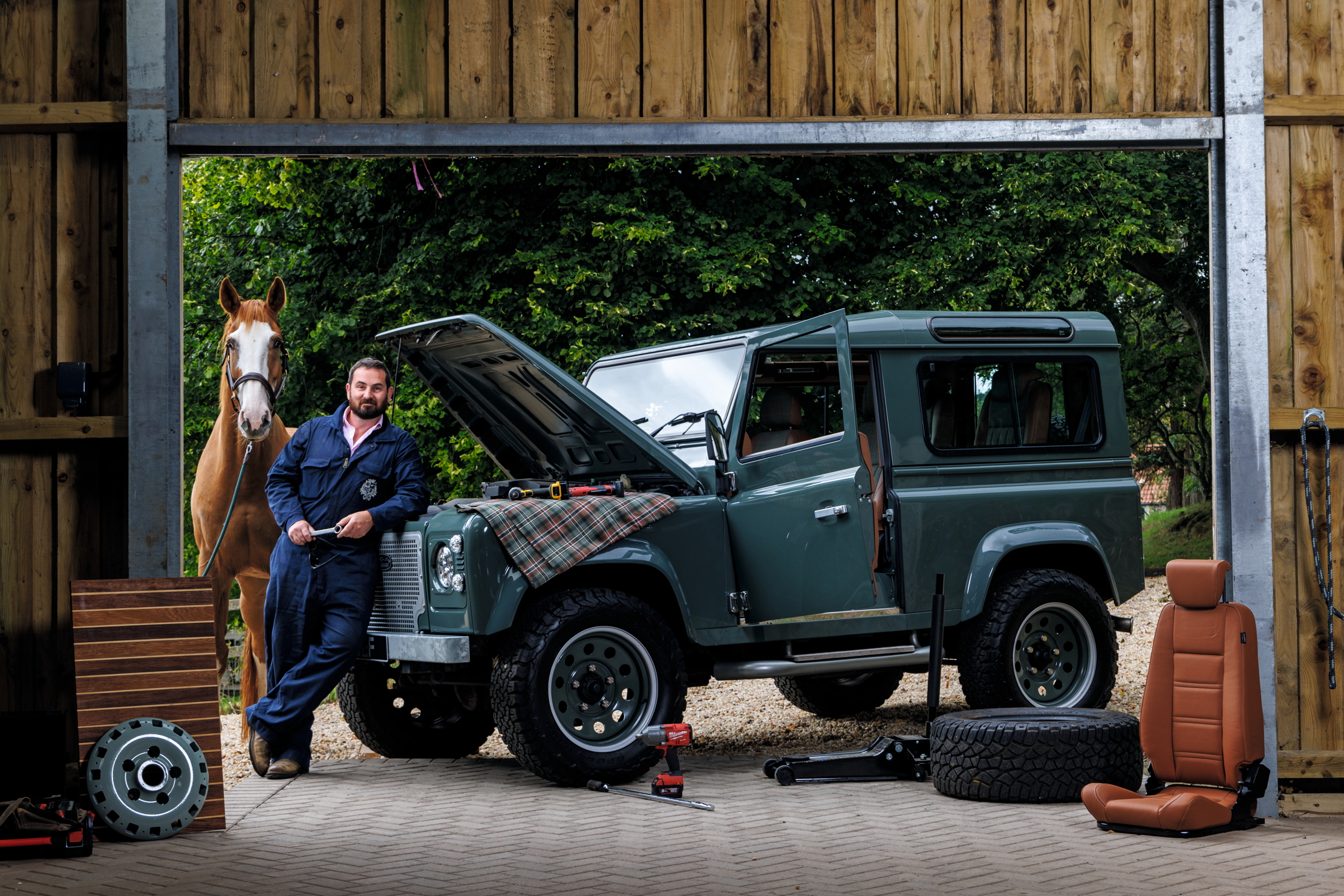Savile Row might be the beating heart of bespoke men's tailoring, but it was named after a woman
Savile Row is the home of the bespoke suit, but its history is a lot more colourful than you might expect.


What do you think of when you read the words ‘Savile Row’? I bet it’s a Bond-like gentleman, standing in front of a mirror in a white shirt while another gentleman, his mouth full of pins, takes down various measurements. Neck; chest; waist. While Savile Row is the home of the bespoke suit (in fact the word ‘bespoke’ is believed to have originated here), the street’s history and contemporary make-up is much more colourful than first impressions imply.
Savile Row came about in the 1730s courtesy of the 3rd Earl of Burlington — who owned the land, the Burlington Estate, and named the road after his wife, Lady Dorothy Savile. Originally, it was a fashionable residential street for wealthy military officers, statesmen and their families. Over time, tailors and dressmakers, who benefited from their custom, moved in.

Livery manager Keith Levett displays rubbings of civil and diplomatic uniforms in the archive room at Henry Poole & Co. Suits are measured, cut, fitted, sewn and finished by the highly skilled tailors entirely by hand, with each suit taking over 60 hours to create. Famous customers include Sir Winston Churchill, Charles Dickens and Oscar Wilde. Henry Poole received a Royal Warrant in 1869 after making liveries for Queen Victoria. Their livery department continues today.
James Poole is widely considered to be the Row’s ‘founding father’. In 1806, he set up shop on Brunswick Square, selling linen cloth and by the Battle of Waterloo, in 1815, he was making finely cut custom military tunics. Stores on Regent Street and Old Burlington Street soon followed. The offering expanded when John’s son, Henry, inherited the business in the mid 19th century and went about creating equestrian and fieldsports attire for aristocrats. As the first ‘celebrity tailor’, he served Napoleon, Queen Victoria and Edward VII — who, in 1865, commissioned a short evening coat for informal dinners at Sandringham. And so the dinner jacket was born. Henry extended his Mayfair premises and the new entrance opening out onto Savile Row proved to be something of a landmark moment.
Other notable businesses soon followed: Hawkes & Co, now Gieves & Hawkes (1912), Huntsman (1919), who produced dress uniforms for British officers in the First World War, and Anderson and Sheppard (1906), whose ‘London Cut’ house style, crafted for the then Prince of Wales by Frederick Scholte, was descended from from the English drape (a softer tailoring style).
The street and its surroundings quickly transformed into a close-knit community of tailors who spoke their own language. A draft with many alterations was referred to as a ‘Clapham Junction’, an unclaimed garment was called a ‘pig’, and a night on the town was known as being ‘on the cod’. Apparently, the slang is still in use today.
In 1945, Hardy Amies Ltd, financed by Virginia, Countess of Jersey (and the first Mrs Cary Grant), arrived at 14, Savile Row, catering to both men and women. ‘A woman's day clothes must look equally good at Salisbury Station as the Ritz bar,’ Amies said. Deprived of couture during the War, women, including Elizabeth II, snapped up his designs. He became the monarch’s dressmaker for 50 years, and designed the gown she wore in her official 1977 Silver Jubilee portrait, among many others. He later branched out into ready-to-wear for men, making history in 1961 when he staged the first men’s ready-to-wear catwalk show — at The Ritz.

The Beatles staged their last live public concert on the rooftop of the Apple Organisation building on Savile Row for director Michael Lindsey-Hogg's film documentary 'Let It Be'.
The ‘peacock revolution’ of the 1960s heralded a shift towards more colourful and flamboyant menswear — a trend that was not entirely Savile Row friendly. However, in 1969, Tommy Nutter and Edward Sexton collaborated on the opening of Nutters of Savile Row and tore up the unofficial rulebook by infusing bespoke tailoring with contemporary (‘out-there’) tweaks. Mick Jagger and Twiggy were fans, and three of the four Beatles are wearing bespoke Nutters suits on the cover of their Abbey Road Album (their final performance took place on Savile Row the same year). In the 1990s, Oswald Boateng satisfied the ‘cool crowd’ with his colourful suits in slim silhouettes, which he sold on neighbouring Vigo Street. The move attracted a much-needed new clientele to the now struggling Savile Row. Oswald was only 28 at the time.
Exquisite houses, the beauty of Nature, and how to get the most from your life, straight to your inbox.
Once a men’s playground, women are now getting a look in on Savile Row. In 2016, Kathryn Sargent became the first female to have her ‘name above the door’ in the street’s 213-year history. It was followed, four years later, by The Deck London (which recently rebranded to Knatchbull) — the first all-female tailor. Fittingly, founder Daisy Knatchbull, a former Country Life Frontispiece, was the first woman to wear a top hat and tails to Royal Ascot.
Amie Elizabeth joined Country Life in 2022. She studied history at Edinburgh University and previously worked in interior design and fashion styling. She regularly contributes to Country Life’s London Life section and compiles the weekly Barometer feature. She also writes for Luxury London and has covered everything from Chanel suits and art events, to the best pies in London.
-
 The Falconer's Tale: Tommy Durcan on how an ancient art lives on in 21st century Ireland
The Falconer's Tale: Tommy Durcan on how an ancient art lives on in 21st century IrelandTommy Durcan of Ireland's School of Falcony joins the Country Life podcast.
-
 Country Life 12 November 2025
Country Life 12 November 2025Country Life 12 Novemeber sees The King showing us his garden at Sandringham, plus Stanley Spencer, falconry and Chariots of Fire.
-
 A painting owned by Edward Guinness is on display next to a near identical version at Kenwood House — but which one is the real Vermeer?
A painting owned by Edward Guinness is on display next to a near identical version at Kenwood House — but which one is the real Vermeer?A mini exhibition at Kenwood House allows viewers to ‘to practise their own connoisseurship’.
-
 What is everyone talking about this week: The great generational wealth transfer foretold by the financial press has already begun in the form of given heirlooms
What is everyone talking about this week: The great generational wealth transfer foretold by the financial press has already begun in the form of given heirloomsIf you're planning to propose to someone forget Graff or Cartier because it's time for tea with Granny.
-
 Omoda 9: Not a Range Rover, but it might be the next best thing
Omoda 9: Not a Range Rover, but it might be the next best thingOmoda, one of the host of Chinese-made cars now on offer in the UK, presents its flagship SUV. We found a car of no frills, and plenty of luxury, at an extremely reasonable price point.
-
 A handful of Scotland's last available freshwater pearls have been transformed into 'mesmerising' pieces of jewellery
A handful of Scotland's last available freshwater pearls have been transformed into 'mesmerising' pieces of jewelleryEdinburgh jeweller Hamilton & Inches have been trusted to handle the incredibly rare organic gemstones.
-
 ‘So many of us look at the world through our screens and forget to pay attention to the world outside’: Katy Hessel on the world’s great female artists, why free entry to museums matters and her consuming passions
‘So many of us look at the world through our screens and forget to pay attention to the world outside’: Katy Hessel on the world’s great female artists, why free entry to museums matters and her consuming passionsThe author of ‘The Story of Art Without Men’ speaks to Lotte Brundle about the dangers of AI, how she fell in love with the art world and why it’s okay that her favourite painting is by a male artist.
-
 What links myself, David Beckham and The King? We all have an affinity for the Aston Martin DB6, a car that has been unfairly punished for not being in a James Bond film
What links myself, David Beckham and The King? We all have an affinity for the Aston Martin DB6, a car that has been unfairly punished for not being in a James Bond filmThe Aston Martin DB6 is better than the DB5, and I am tired of pretending that it isn't.
-
 'The King of Hell was fat from gorging on souls and he expelled some more from his bowels': The many guises of the Devil Antiquity to present day
'The King of Hell was fat from gorging on souls and he expelled some more from his bowels': The many guises of the Devil Antiquity to present dayTaking as many guises as his names, the Prince of Lies turned at times into a man-devouring ogre, a mutant medley of claws, horns and wings, or the brooding rebel that lit the imagination of Romantic painters.
-
 Meet the man who makes David Beckham's Land Rover Defenders
Meet the man who makes David Beckham's Land Rover DefendersLand Rover’s beloved, rattly old workhorse has gained a chic cachet in recent years — particularly when modified to suit all sorts of purposes, even transporting our David Beckham's honey harvest.
